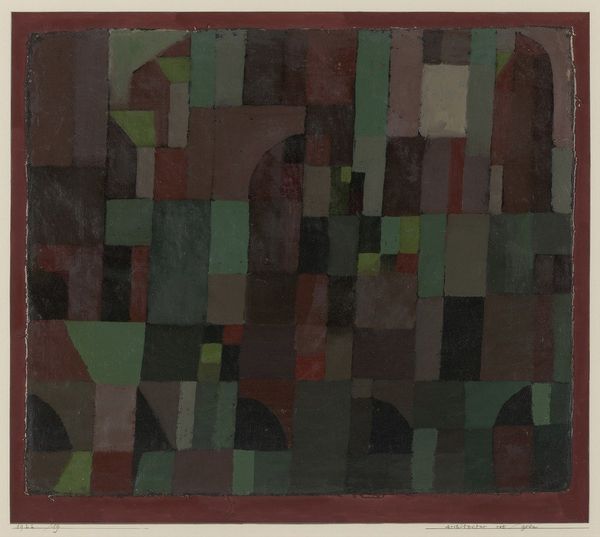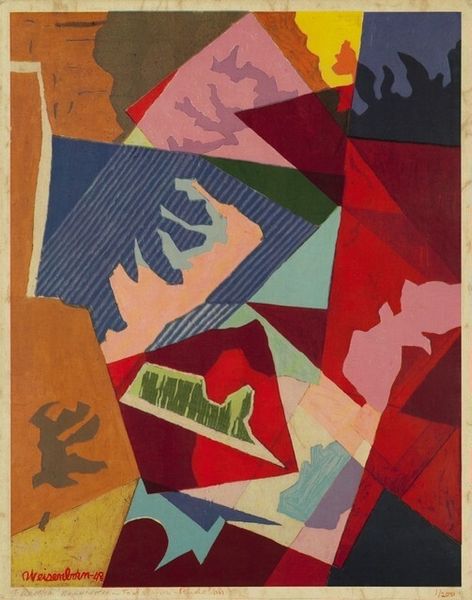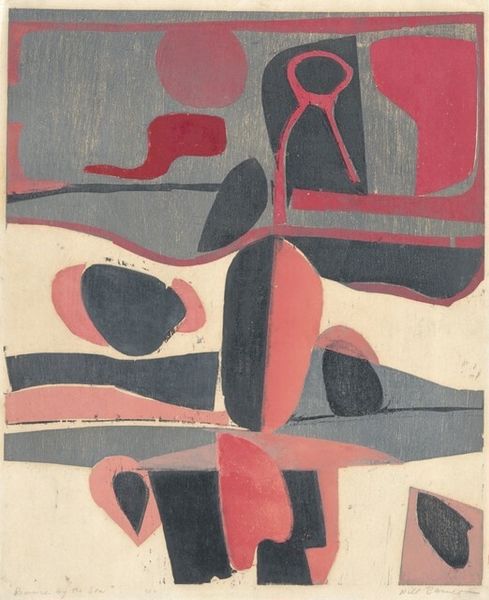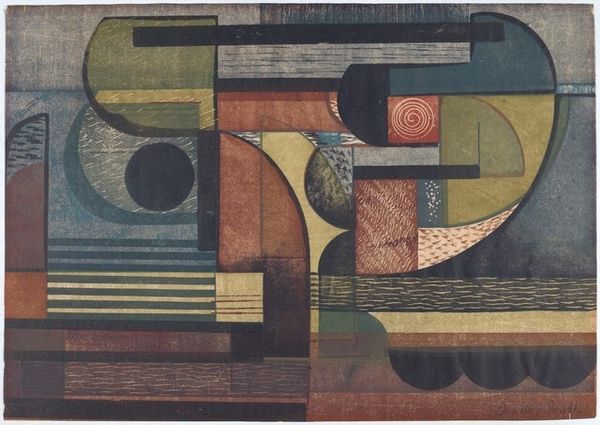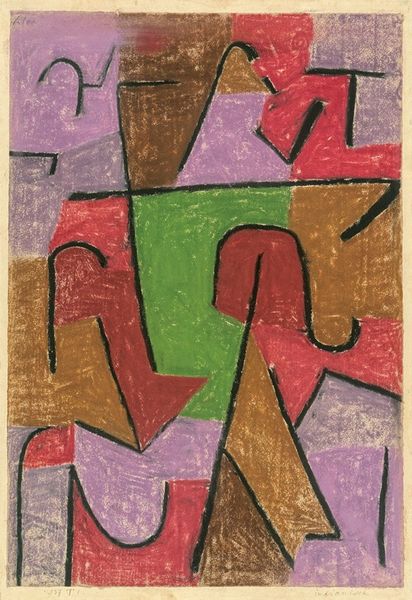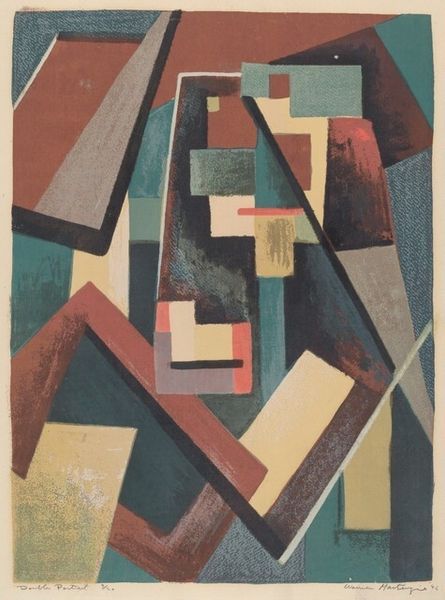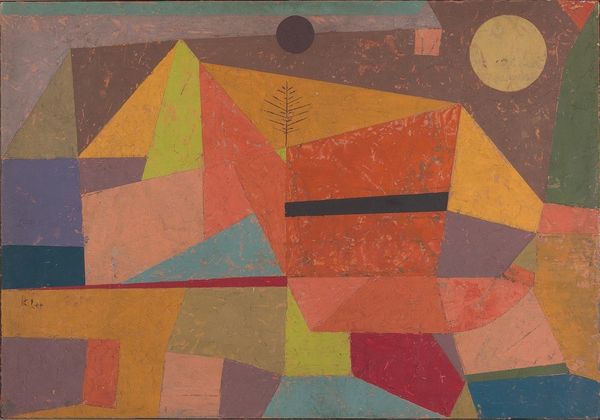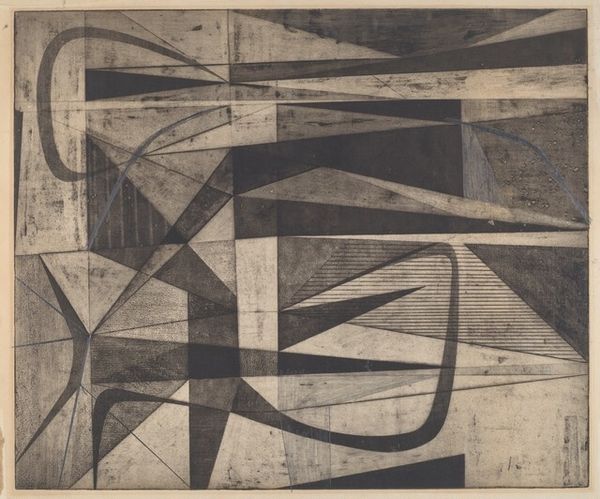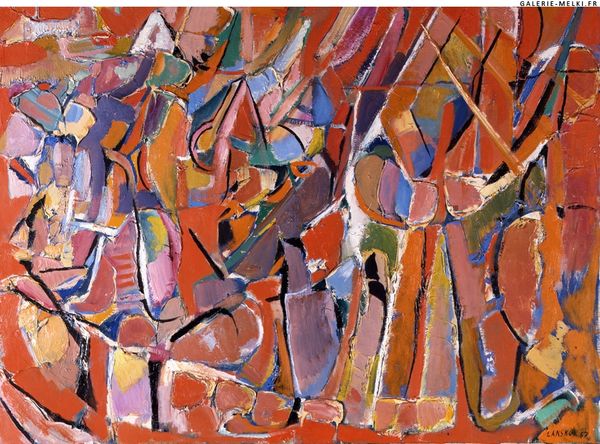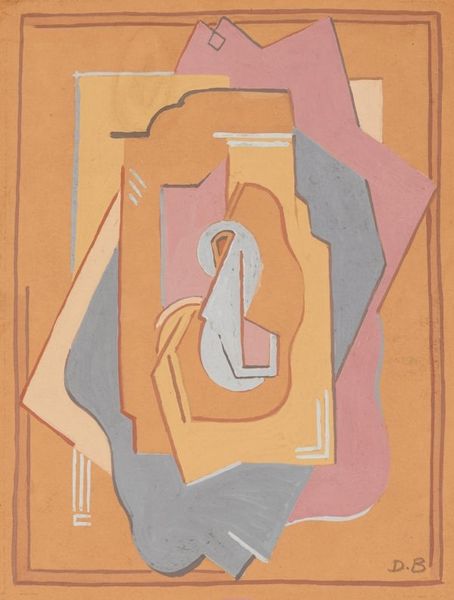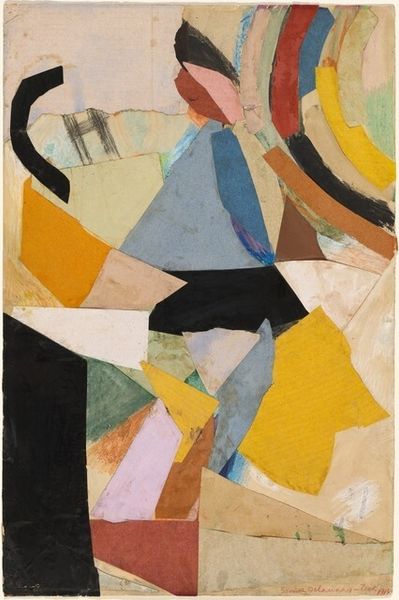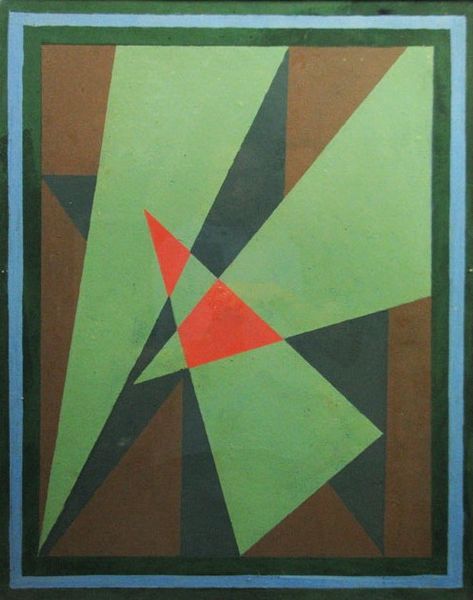
mixed-media, painting, oil-paint
#
abstract-expressionism
#
mixed-media
#
abstract painting
#
painting
#
oil-paint
#
form
#
geometric
#
abstraction
Copyright: James Brooks,Fair Use
Curator: This work, from 1947, is simply titled *Untitled (Abstraction)*. James Brooks employed mixed media and oil paint in its creation. It resides here at the Dallas Museum of Art. Editor: It has a strangely muted vibrancy, if that makes sense. The reds and greens pull you in, but there's also a very apparent earthy undertone, almost like the colors are fighting through mud. Curator: Considering the historical moment, that resonance tracks. Brooks was part of the Abstract Expressionist movement that burgeoned post-World War II, a period rife with angst and a search for new visual languages. Note the interplay of geometric shapes—squares, circles, lines—fragmented and rearranged. It's a fracturing of form, perhaps mirroring a fractured world. Editor: Right. Looking at it materially, I see that push and pull enacted quite literally. Look how the paint seems almost scrubbed into the surface in places, contrasted with the smoother applications elsewhere. The physicality of the act is very present, suggesting a process of layering, excavation, and deliberate mark-making. It isn't about rendering perfection. It’s about doing the work of thinking through material, isn’t it? Curator: Indeed. The symbols, even in their abstraction, resonate with a search for meaning. Circles, for instance, often represent wholeness, while fragmented lines can evoke disruption. Brooks is using these fundamental shapes to articulate something primal, beyond the representational. Consider also the color choices. Red is usually passion and can signal aggression, juxtaposed against the somewhat more subdued shades of green. Editor: This piece seems almost small enough to hold in my hand. When you consider what must have gone into this object: extraction of raw materials, transformation, intentional applications, that tension really makes you feel the labor. How easily is creative labor trivialized? Curator: The emotional impact hinges on precisely that tension, I believe. It's the dynamism inherent within this apparent chaos. I think we bring to it, still today, those buried social and emotional upheavals—a sense of lingering discomfort and tentative rebuilding. Editor: Thanks for your analysis. It feels like there are worlds and ways to think when it comes to materiality! Curator: Likewise. This piece invites such different paths for contemplation, hopefully enriching one's own understandings of self and culture.
Comments
No comments
Be the first to comment and join the conversation on the ultimate creative platform.
